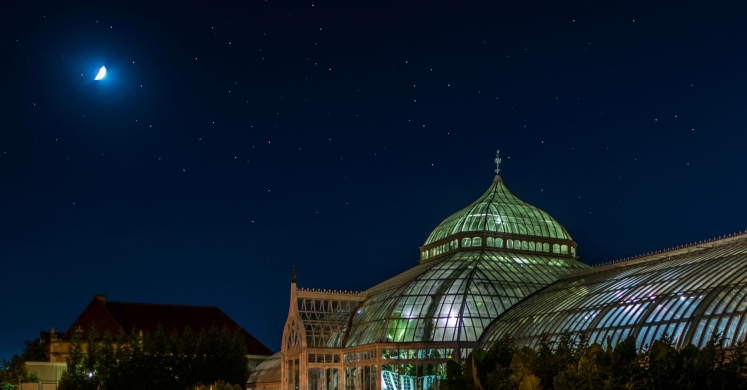Blog

#bioPGH Blog: Stargazing
 A resource of Biophilia: Pittsburgh, #bioPGH is a weekly blog and social media series that aims to encourage both children and adults to reconnect with nature and enjoy what each of our distinctive seasons has to offer. From the best times to plant seasonal flora and enjoy their peak blooms, to astronomical events and creatures to keep an eye and ear out for, Phipps will keep you in the know with what’s going on in our environment!
A resource of Biophilia: Pittsburgh, #bioPGH is a weekly blog and social media series that aims to encourage both children and adults to reconnect with nature and enjoy what each of our distinctive seasons has to offer. From the best times to plant seasonal flora and enjoy their peak blooms, to astronomical events and creatures to keep an eye and ear out for, Phipps will keep you in the know with what’s going on in our environment!
As a city, Pittsburgh boasts an impressive skyline during the day as well as night, and despite the bright lights of the skyscrapers and stadiums has some ideal locations for stargazing. With a new moon approaching this Sun., Sept.13, the darker sky combined with clear observing conditions will make for some ideal stargazing in and around Pittsburgh. Take to the higher grounds of parks, observatories, and even cemeteries just outside the city where outside light sources are sparse for the best celestial visibility. Don’t worry if you can’t make it outside this Sunday, the entire month of September is an ideal time for stargazing for amateur astronomers and seasoned sky watchers alike. In addition to several constellations visible from the Northern Hemisphere’s mid-latitudes, Saturn remains the evening’s brightest planet while Venus dominates the early morning sky, and the Harvest Moon on Sun., Sept. 27 will be particularly special as it will be part of a total lunar eclipse!
Connecting to the Outdoors Tip: Stargazing can be a fun and relaxing year-round activity for young and old alike; but while we still have a few warm evenings of summer left to enjoy, consider having a moon-lit picnic in one of our many local parks and try spotting constellations with one of the many free stargazing apps available for smartphones and tablets. If you’d like a little break from technology and a bit of challenge, you can also very easily construct your own star wheel and use it to help you identify stars and planets via alignments alone. If you have little ones, practice identifying constellations with them with a printable deck of fifty-two “star cards” and test their knowledge on the night sky by seeing how many seasonal constellations they can find.
Continue the Conversation: Share your nature discoveries with our community by posting to Twitter and Instagram with hashtag #bioPGH, and R.S.V.P. to attend our next Biophilia: Pittsburgh meeting.
Additional Resources:
Free Star Charts - The Planets This Month
Sky & Telescope - Tour September's Sky
Sky & Telescope - Make a Star Wheel
Sky & Telescope - Introducing "Star Deck"
About.com - Star Charts Got You Confused? Worry No More!
Photo © Paul g. Wiegman

